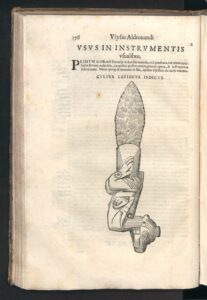Davide Domenici is Associate Professor of Anthropology at the University of Bologna. He directed the Rio la Venta archaeological project (Chiapas, Mexico, 1999-2010) and the Cahokia Project (Cahokia, ILL, USA, 2011-2017). In recent years he collaborated with the MOLAB Mobile Laboratory to study painting materials employed on Mesoamerican codices by means of non-destructive analytical techniques. He is currently exploring the cultural biographies of Mesoamerican objects brought to Italy during the 16th century.
During the 16th century, several lots of Mesoamerican artifacts – including pictorial manuscripts, mosaic-encrusted objects, stone figurines and gilded spearthrowers – were brought to Italy by Dominican missionaries who had been active in the Nahua and Mixtec regions of Mesoamerica. The Mesoamerican objects were given as gifts to Popes and prelates in order to foster a specifically Dominican discourse on Indigenous people’s ingenuity, rationality and convertibility. The study of relevant sources shows how the motivations of the Dominican friars were radically different from those that induced conquistadors such as Hernán Cortés to ship objects to the Spanish court. At the same time, the stylistic study of extant objects from Italian collections also provides important hints on the objects’ ultimate provenience from the Puebla valley and Northern Oaxaca.
After entering the Italian peninsula, the objects brought by the Dominicans entered Italian 16th century museums assembled by art collectors and natural historians. Despite the great emphasis put by recent scholarship on wunderkammern and cabinet of curiosities, the study of the Italian case reveals the diversity of the collecting patterns and of the the kind of knowledge elicited by the study of the Mesoamerican things.





